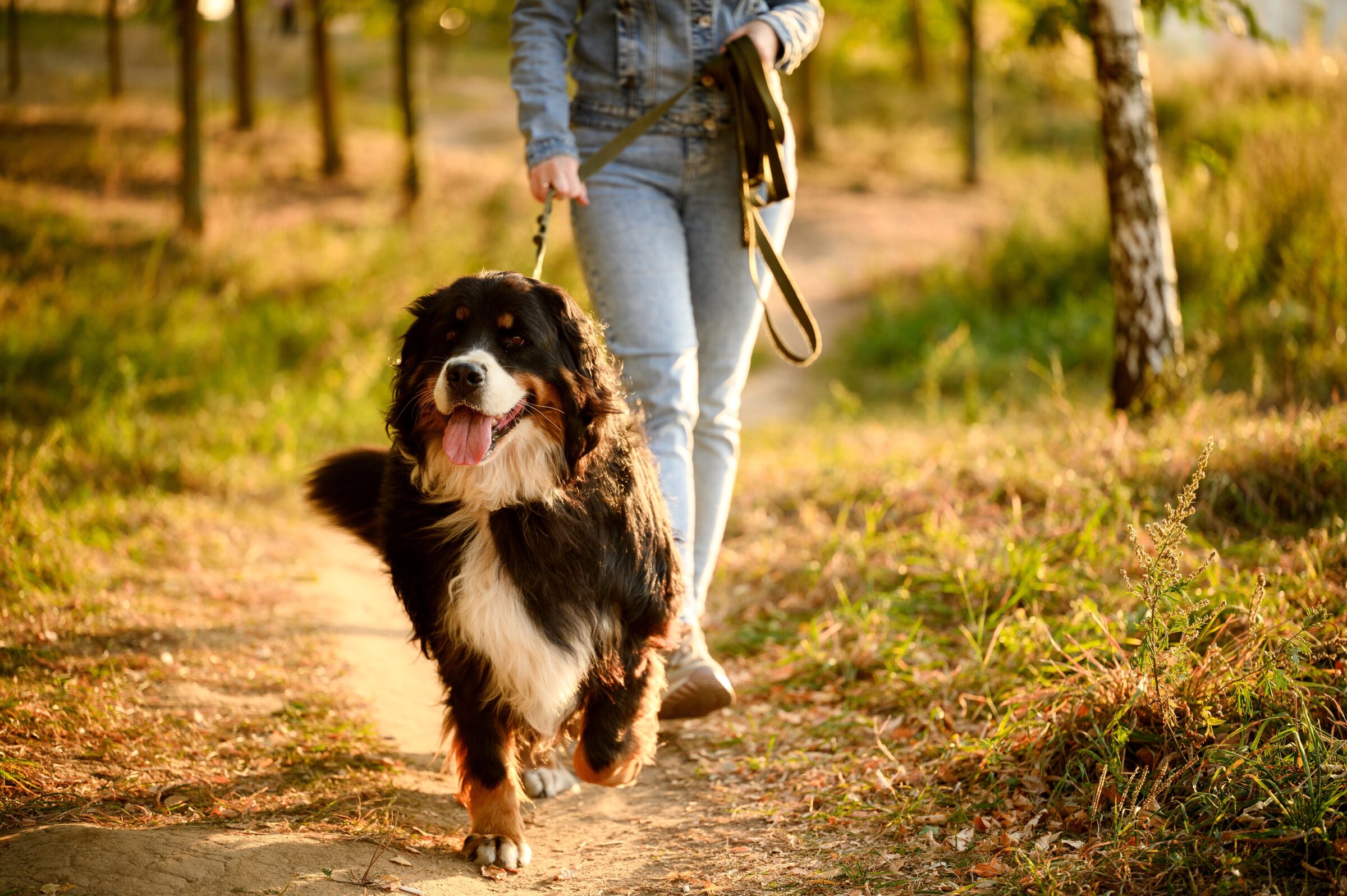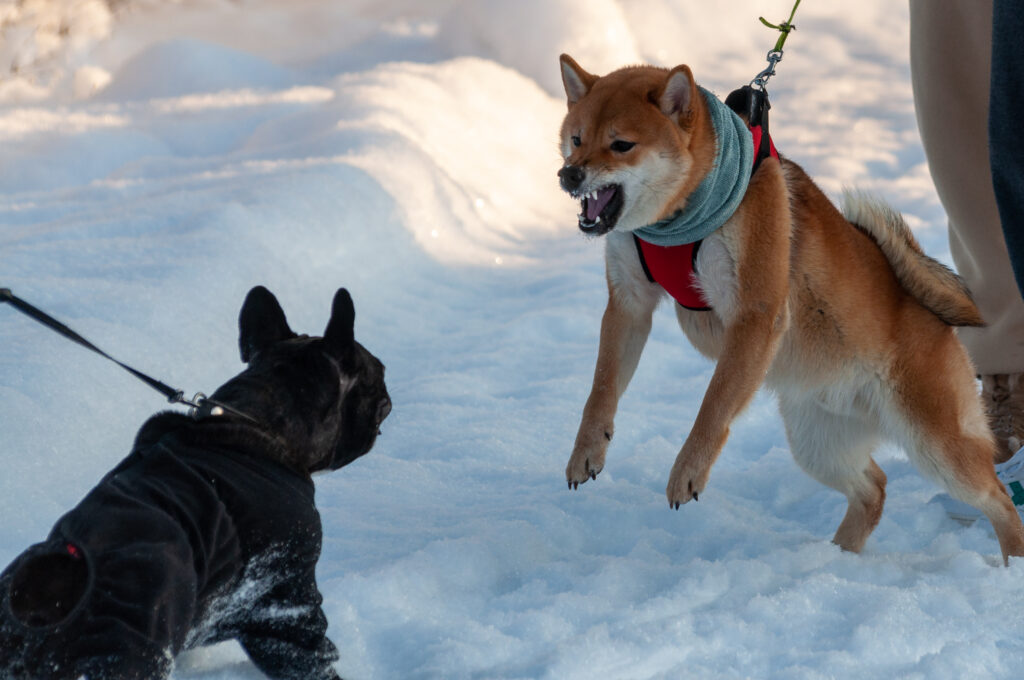Why Does my Dog Lunge at Other Dogs and How to Stop this Behavior
A peaceful walk with your dog can instantly turn into a chaotic scene. One moment, you’re enjoying the fresh air, and the next, your dog is lunging, barking, and pulling on the leash at the sight of another dog. This behavior, known as leash reactivity, is frustrating, embarrassing, and even scary for both you and your pet.
If you’re wondering, “why does my dog lunge at other dogs?”, you’re not alone. The good news is that this behavior is very common, often misunderstood, and can be managed and improved with the right approach. In this guide, we’ll get to the root of the problem and give you the tools you need to stop this behavior for good.
Understanding the “Why”: Common Triggers for Dog Lunging
Dog lunging and barking on a leash isn’t about aggression or a desire to “dominate” another dog. In most cases, it stems from a place of fear, frustration, or over-excitement. Understanding the core reason behind your dog’s behavior is the first step toward fixing it.
- Fear and Anxiety: This is the most common reason for leash reactivity. Your dog might be scared of other dogs, and their lunging and barking is a desperate attempt to create distance and make the other dog go away. It’s a classic “fight-or-flight” response, and because they’re on a leash, they can’t flee, so they choose to fight. If your dog’s lunging comes from a place of fear, it’s crucial to address it compassionately. You can learn more about this by exploring the benefits of training for fear-aggressive dogs.
- Frustration: Some dogs get over-excited when they see another dog. They desperately want to go over and say hello, but the leash holds them back. This pent-up energy and desire can manifest as frustration, leading to lunging and barking.
- Poor Socialization: A dog that wasn’t properly socialized as a puppy might not have learned how to interact with other dogs in a healthy way. This can lead to them being unsure, fearful, or awkward around new dogs. Proper how to socialize your dog is key to preventing these issues.
How Can I Stop My Dog From Lunging at Other Dogs?
This behavior won’t go away on its own. It requires a consistent, multi-pronged approach that combines management, training, and patience.
Management is Your First Step
Before you can start active training, you need to manage your environment to prevent the behavior from happening. Each time your dog lunges, the behavior is reinforced, making it more difficult to overcome. Management is about setting your dog up for success.
- Create Distance: When you see another dog approaching, simply cross the street or turn and walk the other way. The goal is to stay far enough away that your dog notices the other dog but doesn’t react.
- Time Your Walks: If you know certain routes or times of day are busy, adjust your schedule. Walk at times when fewer people are out with their dogs.
Practice Desensitization and Counter-Conditioning
This is the most effective training technique for leash reactivity. It sounds complicated, but it’s a simple process of changing your dog’s emotional response to other dogs.
- Desensitization: Gradually expose your dog to their trigger (other dogs) at a distance where they are calm. This is their “threshold.”
- Counter-Conditioning: At the same time, pair the sight of the other dog with something positive, like a high-value treat (e.g., bits of chicken or cheese). The goal is for your dog to see the other dog and think, “Oh, a dog! That means good things are coming my way!”
- Properly socialize your dog: If the issue behind your dog’s behavior is fear of other dogs, one of the best medicines is proper socialization with a balanced pack of stable dogs. This cannot be done at the dog park where you don’t have control over the dogs that are there or any knowledge about their behavior. This can only be done with a trainer that utilizes “Large Field Socialization” and maintains their own friendly pack of dogs for this purpose. Getting out and running with a great group of dogs can make a world of difference in your dog’s leash behavior.
Master Basic Obedience
Commands like “Look at Me” or “Focus” are vital tools. When you see another dog, use the command to get your dog’s attention and reward them for focusing on you instead of the distraction. This teaches them that you are the most interesting thing in the environment.
What to Do in the Moment: A Quick Action Plan

Despite your best efforts, you might get caught off guard. Here’s a quick action plan for when your dog starts to lunge.
- Stay Calm: Your dog can feel your tension. Take a deep breath and keep your grip firm but relaxed on the leash.
- Turn and Walk Away: The fastest way to de-escalate the situation is to remove your dog from it. Simply turn around and walk in the opposite direction until the other dog is out of sight.
- Do NOT Punish: Yelling, jerking the leash, or scolding your dog will only increase their fear and stress. They will begin to associate other dogs with negative consequences from you, making the problem worse in the long run.
When to Seek Professional Help
If your dog’s reactivity is severe, or if you feel you’ve hit a wall in your training, it’s time to call in a professional. A certified professional dog trainer can provide a personalized plan tailored to your dog’s specific needs and triggers. They can help you implement advanced techniques and guide you through the process safely and effectively.
How BlackPaw Dog Training Can Help Stop This Behavior
Dealing with leash reactivity can be mentally and physically exhausting, but you don’t have to do it alone. At BlackPaw Dog Training, we specialize in helping owners manage and overcome challenging behaviors using compassionate, reward-based methods.
Our dog training programs are designed to help you build confidence and communication with your dog. For severe cases, we often recommend our Total Behavior Reboot program, which is specifically designed to address complex behavioral issues like leash reactivity.
Our Dog Boarding and Training Program Can Help
For some dogs, an intensive, immersive training experience is the best path to success. Our dog boarding and training program provides a structured, controlled environment where a trainer can work with your dog multiple times a day. This consistency and lack of distraction allow for rapid progress, teaching your dog to stay calm and focused when around other dogs and people.
If you’re ready to take the next step and finally enjoy stress-free walks with your best friend, don’t hesitate. Contact us today to learn more about how we can help.

